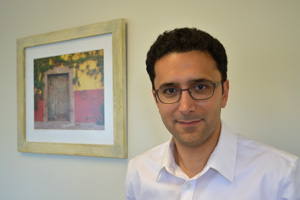People injured by gunshot wounds in Washington state were at far greater risk of returning to the hospital with ensuing firearm-related injuries, according to a new study by the University of Washington School of Public Health.

The gunshot victims were also at elevated risk for death and for committing future crimes, researchers found. "Some of the numbers are just staggering," said lead researcher Ali Rowhani-Rahbar, assistant professor of epidemiology at the School of Public Health.
More than 33,000 people were killed by firearms in the U.S. in 2013, while firearms-related injuries topped 84,000.
Rowhani-Rahbar and colleagues from the School of Public Health and UW's Harborview Injury Prevention Center conducted a statewide study that identified nearly 700 trauma patients who suffered a firearm-related injury in Washington in 2006-2007. Using hospital and arrest records, researchers followed surviving patients for up to six years after the initial hospitalization to look at risks for subsequent violent victimization and crime perpetration. They compared that group to more than 70,000 patients hospitalized for non-firearm injuries and more than 180,000 hospitalized for reasons other than injuries.
They found gunshot survivors were 21 times more likely to be hospitalized for a subsequent gun injury than non-injury patients. By contrast, victims of other assaults (not involving firearms) were only three times more likely to become rehospitalized for gunshot wounds, Rowhani-Rahbar said.
Among other findings:
- Gunshot survivors were four times more likely to die from firearms than other patients.
- Among hospitalized patients, criminal history of arrest had a stronger association with subsequent violent crime perpetration than did a proper diagnosis of mental illness.
The study was published Feb. 23 in the Annals of Internal Medicine. Preliminary findings on the results for King County were released last year, but not in a formal study. The research was funded by the Seattle City Council and the UW's Research Royalty Fund.
"It's a terrific model of funding," Rowhani-Rahbar said. In the past, federal funds for gun violence were difficult to obtain because Congress threatened to cut funds from the CDC budget for any research that hinted at gun control measures. Funding for gun violence is now available from the National Institutes of Health and the National Institute of Justice, according to Rowhani-Rahbar.
In the same issue of the journal, eight national health organizations plus the American Bar Association declared gun-related injuries a "major public health problem" and issued a call to action. The organizations offered nine strategies, including universal background checks, a ban on military assault-style weapons and more federal support for gun-violence research.
The next step for researchers is to evaluate interventions to see what's most effective in reducing repeat violence and crime among those hospitalized for gun injuries, according to Rowhani-Rahbar. A number of programs exist, but they haven't been thoroughly tested.
Rowhani-Rahbar stressed the research was not about restricting gun ownership or gun rights. "It's about harm reduction," he said. "It's about saving lives."
